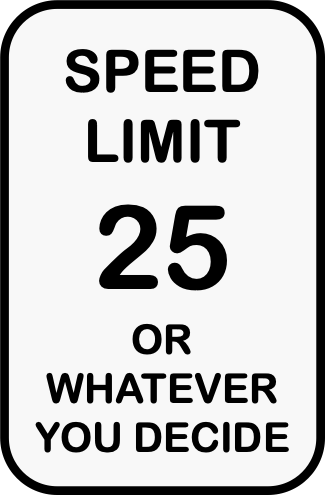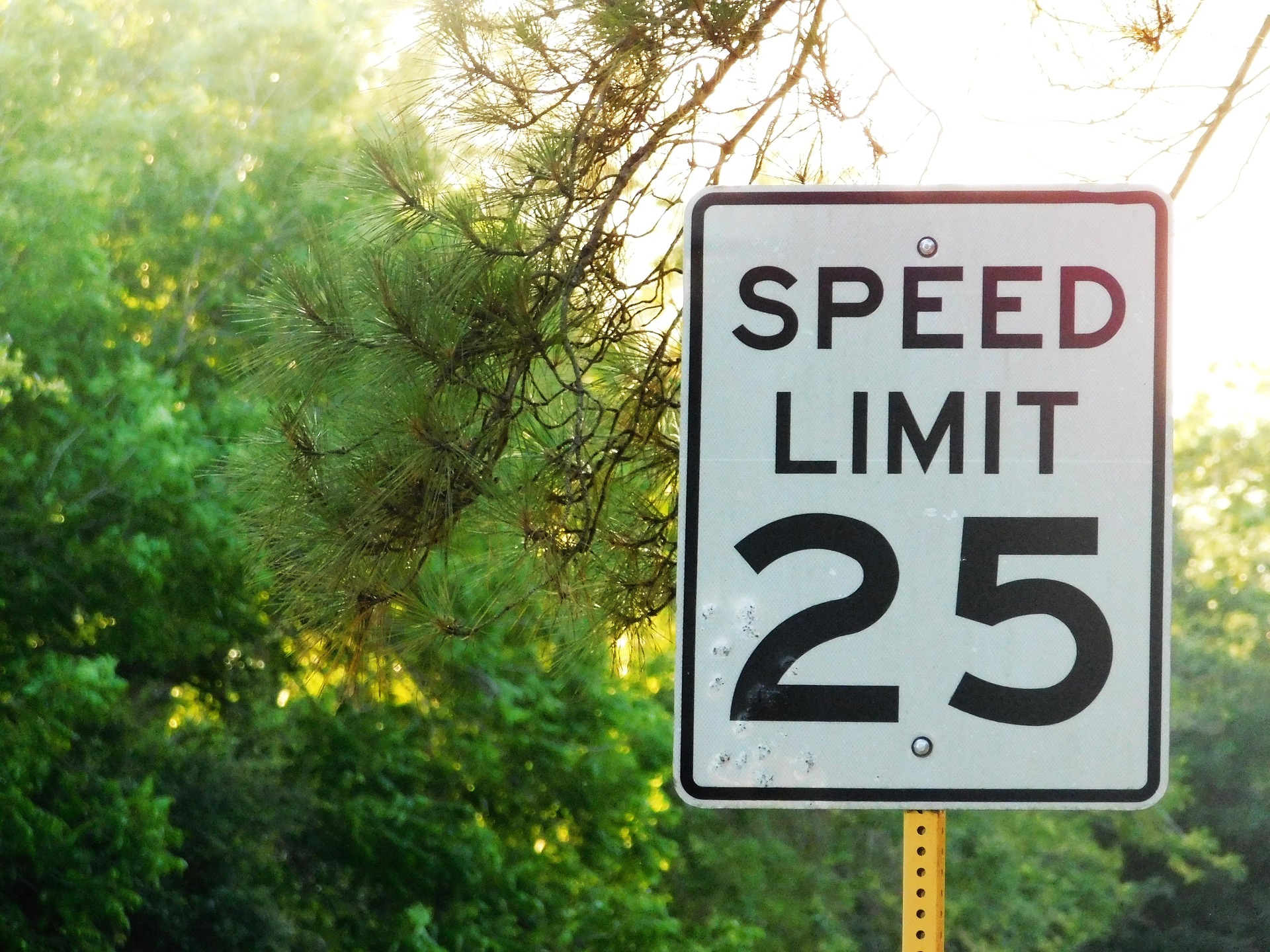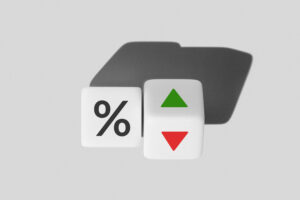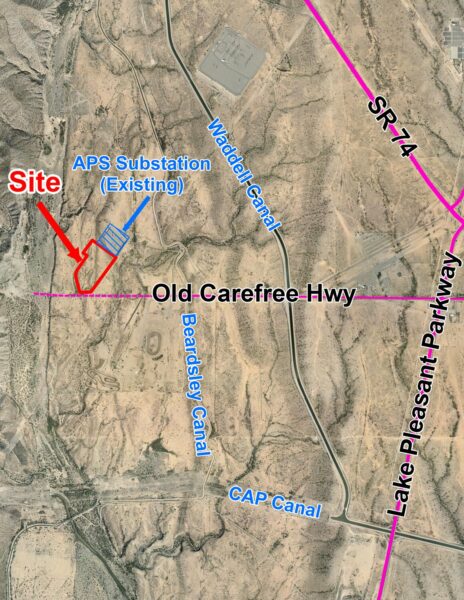By Paul Basha, traffic engineer, Summit Land Management
As described in a previous column, the Federal Highway Administration publication, The Manual on Uniform Traffic Control Devices regulates signs, striping, and pavement markings throughout the United States. As is appropriate, state law determines permissible speed limits.

Arizona state law might not be all that helpful.
Arizona Revised Statute 28-701.A states in part: “A person shall not drive a vehicle on a highway at a speed greater than is reasonable and prudent under the circumstances, conditions, and actual and potential hazards then existing.”
Who decides what is reasonable and prudent?
Just curious, do any parents talk to their children that way? Yeah, we know, no nanny state allowed.
Do our laws regarding murder have similar language?
Less that appear to be an exaggerated comparison. The number of homicides in the United States per year has been between 15,000 and 20,000 for the past 20 years. The number of deaths by car accident in the past 20 years have been between 30,000 and 40,000 per year.
In fact, approximately the same number of people have been
killed in car accidents in the United States from 1975 to the present, as American military personnel have been killed in wars since 1775 to the present.
Most certainly, high speed is not the cause of every traffic fatality, though it is very often a contributing factor. If someone or something goes wrong, a few additional seconds to react can prevent a collision. Remember, 94% of all traffic collisions are driver error. So, is it wise to trust human drivers to determine “the reasonable and prudent [speed] for circumstances, conditions, and actual and potential hazards”?
Police officers and courts can only enforce the laws written by the Arizona Legislature. So, police officers are required to prove to a judge that someone was driving at an unreasonable or imprudent speed. Unfortunately, over the decades this has come to mean, more than 10 miles-per-hour over the speed limit.
Fortunately, Arizona Revised Statute 28-701.B.2 and 28-701.B.3 help . . . somewhat?
28-701.B.2 explains that a speed in excess of 25 miles-per-hour is too great and therefore unreasonable in a business or residential district. 28-701.B.3 explains that a speed in excess of 65 miles-per-hour is too great and therefore unreasonable in other locations.
These two statutes provide boundaries: 25 to 65 miles-per-hour.
Arizona Revised Statute 28-701.D. allows speed limit reductions for conditions such as intersections, curves, hills, narrow roads, winding roads, pedestrians, and even, highway conditions.
Furthermore, Arizona Revised Statute 28-703.A allows local authorities to determine speed limits “on the basis of an engineering and traffic investigation”.
The Manual on Uniform Traffic Control Devices suggests consideration of much that is included in these various Arizona State Laws. The Manual also suggests that speed studies determine speed limits. It states that the speed limit should be within 5 miles-per-hour of the 85th percentile traffic speed. (The 85th-percentile travel speed is that speed at which 85% of the traffic is traveling. Perhaps easier to understand the reverse, the 85th percentile speed is that speed that 15% of the traffic is exceeding.)
Rather similar to the “reasonable and prudent speed” Arizona State Law directs police officers to enforce. The Manual also suggests consideration of road characteristics, shoulder condition, grade, alignment, sight distance, roadside development, environment, parking, pedestrians, and crashes.
To repeat, the Manual suggests that traffic engineers measure prevailing travel speeds and post the speed limit close to that speed, unless a definitive safety reason suggests a lower speed.
Many traffic engineers correctly recognize that this 85th Percentile Speed standard was developed in the 1940’s, and is no longer valid. Anyone notice differences in vehicle comfort in the past 75 years? Once upon a time, drivers and passengers felt the road and the speed of their vehicle. Not now.
We’ve all had the experience of driving 75 to 80 miles-per-hour on a freeway, exiting onto an arterial street, then driving at 45 miles-per-hour feeling as though we are barely moving.
Fact is people have no concept of the damage a one to two ton vehicle traveling at 60 miles-per-hour (88 feet-per-second) could potentially cause. Those who have been in serious collisions know. The fact that few people have had this experience once, and even fewer people more often, is evidence that serious car collisions are rare. Small comfort to those who have been in one.
Many public agency traffic engineers when talking with residents who want their residential street speed limits lowered, use this pseudo-Mythbusters technique. Some of the requesting residents stand on the side of their street with one of those speed measuring devices the police use, and other requesting residents drive past in their vehicles at 25 miles-per-hour. Then the residents switch roles. Always, the drivers say that driving at 25 was painfully slow, and the residents believe the speed measuring devices were displaying incorrect low speeds – that the cars must have been traveling at 35 – though the drivers were traveling at 25 mph or less. Standing next to a car traveling at 25 mph is very different from being in a car traveling at 25 mph.
Back in the late 1980’s, a resident of Scottsdale went before the Scottsdale City Council requesting 15 miles-per-hour signs on her residential street, somewhere south of Chaparral Road and east of Hayden Road. Her daughter, with a physical disability, had been a Scottsdale Unified School District student, and was then attending Scottsdale Community College. The mother pleaded with the Council to protect her daughter with a low speed limit and strict enforcement. The Council complied. You guessed it, the requesting lady received a ticket for going 40-mph in a 15-mph zone. She was livid, complaining to the officer that she was not the problem, other people were. Virtually every public agency traffic engineer in the country has a similar story.
Many people want everyone else to drive slower than they themselves are willing to drive. Most people want everyone to drive very slow in their neighborhood, while they drive fast in everyone else’s neighborhood. What did Michael Jackson sing, “I’m starting with the man in the mirror, I’m asking him to change his ways”? Mahatma Gandhi’s version was “you must be the change you want to see in the world”.
OK, even I no longer drive the speed limit on freeways. Became far too lonely and dangerous. Regular city streets? Yeah, I’m the one in front of you in the teal blue sedan who’s terribly delaying you because my speedometer matches the speed limit sign. Who knows what greatness you would have accomplished if only you had arrived at your destination 2 minutes earlier? (Yeah driving 10 miles at 40 mph instead of 45 mph takes less than 2 minutes longer. As does driving 2 miles at 25 mph instead of 35 mph.)
On two different streets in Scottsdale in the 1980’s, and two different streets in Carefree in the early 2000’s; speed limits were increased, and travel speeds decreased. People will obey reasonable traffic laws, and will disobey unreasonable traffic laws. Changing the little black numbers on the little white signs will not force people to drive slower.
Might be better if Arizona law stated that a person shall not drive a vehicle on a highway at a speed greater than the posted speed limit. Would you want that? Then drive accordingly, even when no one with a badge or a camera is looking.
Curious about something traffic? Call or e-mail Paul at (480) 505-3931 and pbasha@summitlandmgmt.com.












